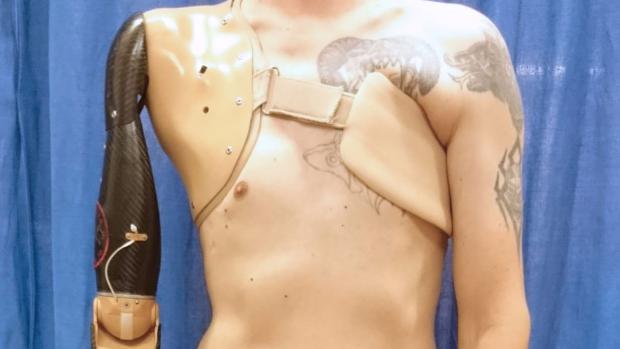
Breaking News
 Dust Off The Shovels: Quick Burst Of Snow Targets Mid-Atlantic, I-95 Corridor
Dust Off The Shovels: Quick Burst Of Snow Targets Mid-Atlantic, I-95 Corridor
 The Soul vs. The Machine: A preview of the AI-ruled future where humans are obsolete
The Soul vs. The Machine: A preview of the AI-ruled future where humans are obsolete
 The Silver & Gold Data Nobody Wants To Show You | Mike Maloney & Alan Hibbard
The Silver & Gold Data Nobody Wants To Show You | Mike Maloney & Alan Hibbard
 Europe Continues To Interfere In Ukraine's Last Chance For Peace
Europe Continues To Interfere In Ukraine's Last Chance For Peace
Top Tech News
 This tiny dev board is packed with features for ambitious makers
This tiny dev board is packed with features for ambitious makers
 Scientists Discover Gel to Regrow Tooth Enamel
Scientists Discover Gel to Regrow Tooth Enamel
 Vitamin C and Dandelion Root Killing Cancer Cells -- as Former CDC Director Calls for COVID-19...
Vitamin C and Dandelion Root Killing Cancer Cells -- as Former CDC Director Calls for COVID-19...
 Galactic Brain: US firm plans space-based data centers, power grid to challenge China
Galactic Brain: US firm plans space-based data centers, power grid to challenge China
 A microbial cleanup for glyphosate just earned a patent. Here's why that matters
A microbial cleanup for glyphosate just earned a patent. Here's why that matters
 Japan Breaks Internet Speed Record with 5 Million Times Faster Data Transfer
Japan Breaks Internet Speed Record with 5 Million Times Faster Data Transfer
 Advanced Propulsion Resources Part 1 of 2
Advanced Propulsion Resources Part 1 of 2
 PulsarFusion a forward-thinking UK aerospace company, is pushing the boundaries of space travel...
PulsarFusion a forward-thinking UK aerospace company, is pushing the boundaries of space travel...
 Dinky little laser box throws big-screen entertainment from inches away
Dinky little laser box throws big-screen entertainment from inches away
 'World's first' sodium-ion flashlight shines bright even at -40 ºF
'World's first' sodium-ion flashlight shines bright even at -40 ºF
Robotic prosthetic taps spinal nerve signals

Could a new robotic prosthetic arm that detects signals from spinal nerve cells nudge researchers closer to creating an artificial limb that resembles the real thing?
The problem with muscle-controlled robotic arms is that they rely on twitches from amputated limbs, the fibers of which are often damaged.
"When an arm is amputated the nerve fibres and muscles are also severed, which means that it is very difficult to get meaningful signals from them to operate a prosthetic," explains Dario Farina, a professor of bioengineering at Imperial College London.
This limits the number of tasks the artificial limb can perform and explains why up to 50 percent of users end up dumping them in frustration, he claims. But what if the prosthetic made use of the nervous system instead, so that the signals sent from the motor neurons, which control muscle movement, could be deciphered more clearly? Could this lead to the development of more intuitive robotic arms? This is what Farina and his team wanted to find out.



